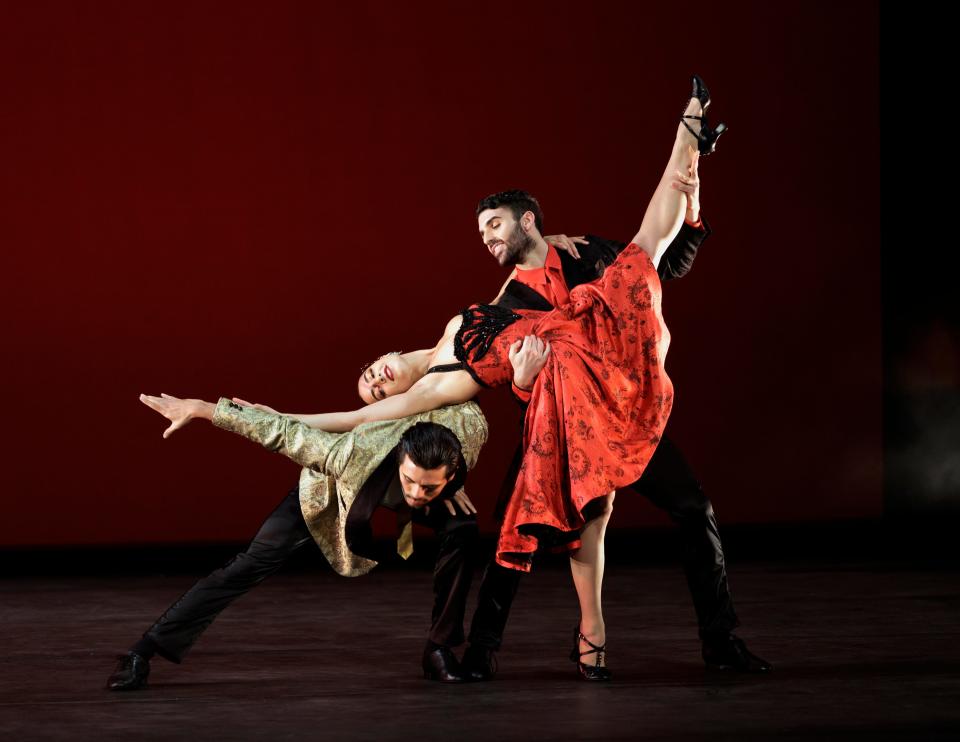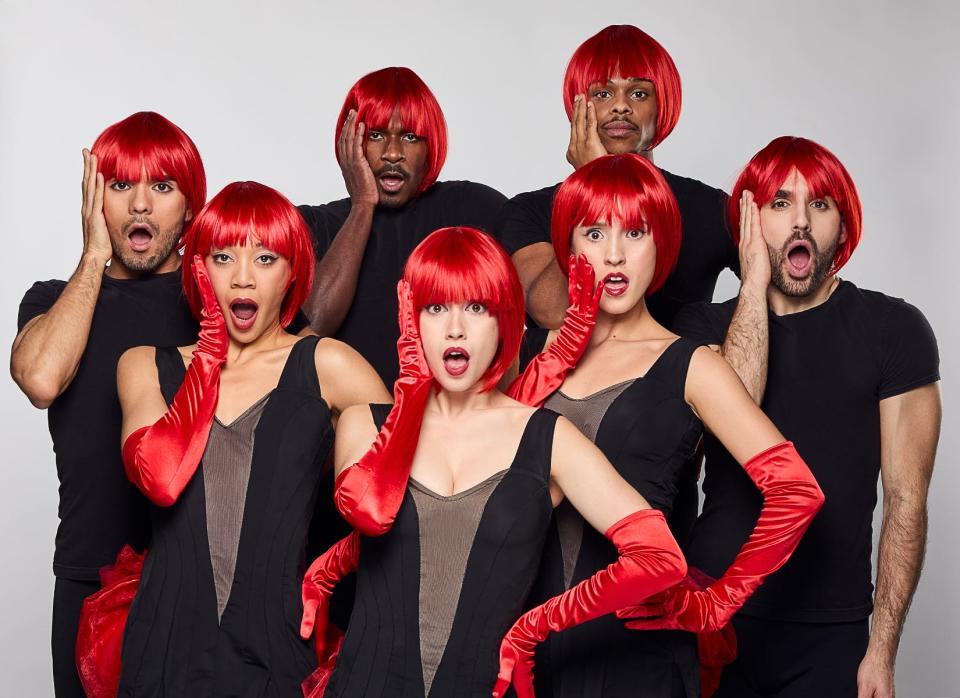Ballet Hispanico reflects on changing images of Latin culture in Sarasota program
- Oops!Something went wrong.Please try again later.
- Oops!Something went wrong.Please try again later.
When Ballet Hispanico returns to Sarasota for the first time in six years, audiences will see the culmination of a years-long transformation for the 55-year-old company.
This season marks the 15th anniversary of former dancer Eduardo Vilaro’s tenure as artistic director, and he said it “cements what I wanted to bring to the company, which is a deeper sense of the diversity of what it is to be Latin American or Latino in America, through dance, our art form. It’s the diversity of all of who we are.”
The company, which is being presented for the second time by The Sarasota Ballet March 8-11, will perform three pieces that demonstrate a range of styles and traditions.

It includes “Club Havana” by choreographer Pedro Ruiz, which offers Cuban-inspired mambo and cha cha. “He captures that melancholic romanticism that Cubans have, with the old cars, the cigar smoking, the 1950s dress. It captures it perfectly,” Vilaro said.
Annabelle Lopez Ochoa’s “House of Mad’moiselle” is an updated version of an earlier piece that deals with gender roles in Latin culture, particularly for women.
“It shows both the exultation of women and the trials, the whole idea of Maria and why we call our mothers and sisters Maria,” he said. “I love tongue-in-cheek work, I love work that uses humor to stamp out or expose certain things. Latino culture is very misogynistic. Let’s not mince words, and this piece exposes that.”

In the original 2010 version that Ochoa created for the company, she used a woman as a central figure. It is now a non-binary figure, which Vilaro said shifts the conversation she initiated. It includes music by Chavela Vargas, a Costa Rican-Mexican activist singer, and others, and touches on Leonard Bernstein’s version of “Maria.”
“What a great song, but the baggage that ‘West Side Story’ has for women, our culture, Puerto Ricans, Latins, is strong,” Vilaro said.
The final piece “18 + 1” by Gustavo Ramirez Sansano, also uses humor.
“It juxtaposes a very typical big band sound from the 1940s and 1950s and puts it up against this very non-contemporary Latino movement,” Vilaro said. “It pokes at the stereotypes we’ve had for so many years in America. It opens up the dialogue of what can be or is Latino, which is ultimately a question for all cultures. Why do we have stereotypes? Why are we still in boxes? Why hold us down?”

Tapping into a rich history
Vilaro said the three choreographers are among his favorites that he introduced to Ballet Hispanico since taking over in 2009 from founder Tina Ramirez, who opened the organization as a dance school and community-based performing arts troupe. Vilaro was born in Cuba and came to New York at age 6. He danced with the company from 1988 to 1996 and later earned a master’s degree in interdisciplinary arts and was the founder and artistic director of Luna Negra Dance Theater in Chicago.
Just about everything Ballet Hispanico does “comes from a certain type of folk tradition that includes dance,” he said. “Each of these Latino choreographers have in them, essences of dances that were made to sustain culture, dances that were made during oppressive states. All those beautiful salsas and all that, that’s a fusion of slavery and African rhythms, things that helped our communities persevere. That’s what I love to capture when I try to put a program together.”
Arts Newsletter: Sign up to receive the latest news on the Sarasota area arts scene every Monday
Review: ‘Carmen’ seduces audiences once again at Sarasota Opera
Two years ago, Ballet Hispanico was among dozens of organizations that received large and unexpected gifts from philanthropist MacKenzie Scott. The company received $10 million.
“It came out of the blue and I thought it was a scam at first,” Vilaro said. “Do you know what that kind of money does to an arts organization? And still we struggle. We are an organization that is 55 years old and was underfunded for years. We’re not the glamorous ballet company that major donors use for climbing the ladder in social circles. We were that cute Latino organization. But we persevere for many years. It was the largest gift we ever received and it was really life altering for us.”
Ballet Hispanico
Presented by The Sarasota Ballet. March 8-11, FSU Center for the Performing Arts, 5555 N. Tamiami Trail, Sarasota. Tickets are $40-$125. 941-359-0099; sarasotaballet.org
Follow Jay Handelman on Facebook, Instagram and Twitter. Contact him at jay.handelman@heraldtribune.com. And please support local journalism by subscribing to the Herald-Tribune.
This article originally appeared on Sarasota Herald-Tribune: Ballet Hispanic unveils diversity through dance in Sarasota program

